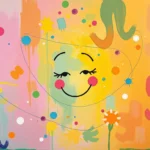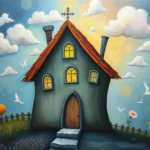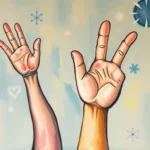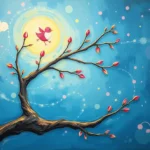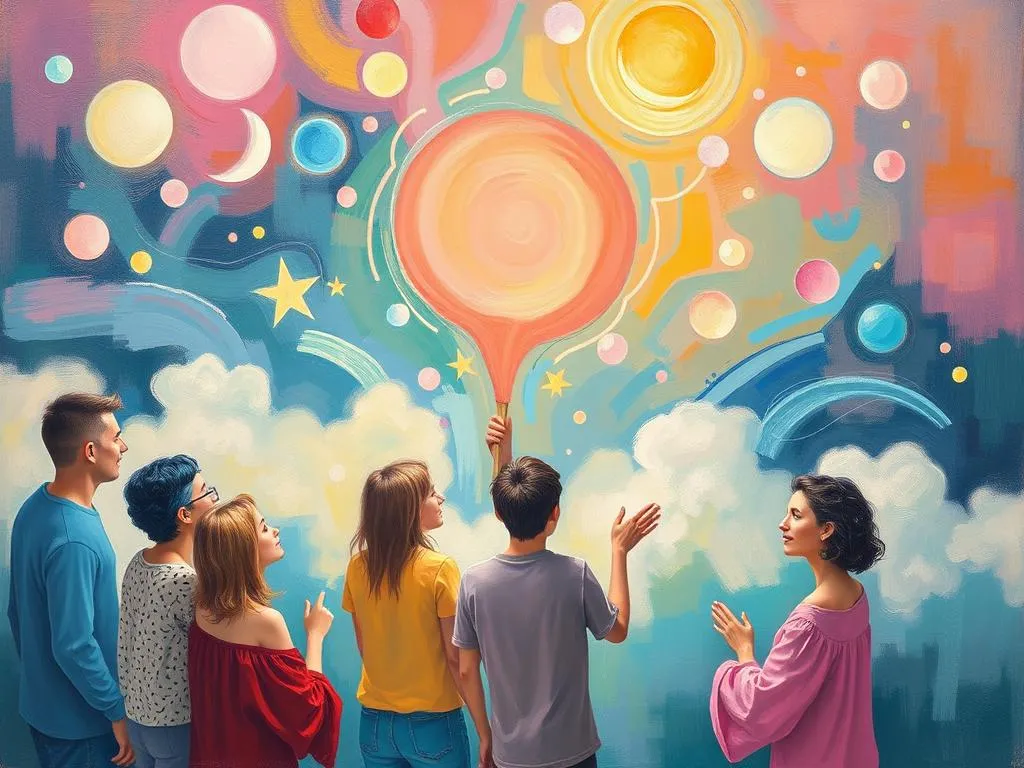
Have you ever woken up from a dream that felt so real, so vivid, that you couldn’t shake it off? Perhaps you dreamt of wandering through a bustling market filled with vibrant colors and exotic scents, or maybe you found yourself at a reunion with long-lost friends, laughing and sharing stories. Dreams can feel like a portal to another world, a canvas for our subconscious to paint its deepest fears, desires, and reflections. Today, let’s delve into the fascinating world of dreams, focusing on the community members that often populate our dreamscapes. Together, we’ll explore the symbols that these dream figures represent and what they reveal about our inner selves.
Understanding the Symbols
The characters in our dreams often serve as symbols, representing various aspects of our lives, emotions, and experiences. In a way, they are like actors on the stage of our subconscious mind. Traditional interpretations often draw from cultural beliefs, while modern psychology offers a more individualistic lens.
For instance, in Eastern cultures, dreams might be seen as a reflection of one’s karma or spiritual journey, where community members represent the interconnectedness of all beings. In contrast, Western perspectives often interpret dreams through the lens of personal psychology. For example, Sigmund Freud viewed dreams as a way to explore repressed desires, while Carl Jung believed dreams could provide insights into our collective unconscious.
Challenging some common assumptions, many people think that dreaming of family or friends is merely about them. But it can be much more complex. These figures might embody aspects of yourself—your fears, aspirations, or qualities that you admire or wish to develop.
Moreover, psychological concepts like archetypes and projections come into play. An archetype could be the wise mentor you dream about, representing your inner guidance, while a projection might bring forth someone you know who embodies traits you’re currently grappling with.
Common Scenarios
Now that we’ve set the stage, let’s dive into some common scenarios involving community members that frequently appear in dreams. Each of these scenarios reveals a facet of our psychological landscape.
1. The Reunion with Old Friends
Imagine this: you find yourself at a lively reunion with friends from high school, laughing and reminiscing about the good old days. This dream can often signify a longing for connection and nostalgia.
Psychological Significance: It might reflect your current feelings of isolation or a desire to reconnect with your past self. Perhaps life has become overwhelming, and you crave those carefree days of youth.
Real-Life Example: Meet Sarah, a 30-year-old graphic designer who recently dreamt of her high school friends. With a demanding job and little time for socializing, she realized she missed the camaraderie of her youth. The dream prompted her to reach out and organize a reunion, reigniting old friendships.
2. The Mentor Figure
In another scenario, perhaps you dream of an influential teacher or mentor guiding you through challenges. This figure often embodies wisdom and support, pushing you towards personal growth.
Psychological Significance: The mentor represents your desire for guidance in navigating life’s complexities. This dream may suggest that you’re seeking reassurance or validation in your current endeavors.
Real-Life Example: Tom, a 25-year-old graduate student, often dreams of his favorite professor offering advice. Feeling lost in his studies, Tom’s subconscious nudged him to seek mentorship, leading him to form a valuable relationship that enhanced his academic journey.
3. The Family Gathering
Picture this: you’re surrounded by family members in a warm, inviting home, sharing stories and enjoying each other’s company. Family gatherings in dreams can evoke feelings of comfort or unresolved tensions.
Psychological Significance: Such dreams often highlight familial bonds, reflecting your current relationships or unresolved issues. They might signal a need to reconnect or address lingering conflicts.
Real-Life Example: Lisa, a 28-year-old marketing executive, dreamt of a family dinner where everyone was laughing but felt an undercurrent of tension. Upon waking, she realized she needed to address some unresolved issues with her sibling, which ultimately improved their relationship.
4. The Unfamiliar Community
In an intriguing twist, you may find yourself in a dream with strangers who feel oddly familiar. This scenario can be quite perplexing!
Psychological Significance: These unfamiliar faces often represent parts of yourself that you haven’t fully acknowledged. They may symbolize qualities you admire or wish to integrate into your life.
Real-Life Example: David, a 35-year-old entrepreneur, dreamt of a community of artists who inspired him. Though he had never met them, their presence encouraged him to pursue his long-forgotten passion for painting, revitalizing his creative spirit.
5. The Conflict Within the Community
Finally, consider a dream where you’re caught in a heated argument among friends or family. This scenario can be quite distressing and might signify internal conflict.
Psychological Significance: The conflict often mirrors your own struggles with self-identity or external pressures. It might indicate feelings of inadequacy or the need to assert your beliefs in your waking life.
Real-Life Example: Anna, a 32-year-old teacher, frequently dreamt of her friends bickering over trivial matters. Feeling torn between different perspectives, she realized she needed to stand up for her beliefs at work, empowering her to voice her opinions more confidently.
What Your Dream Reveals
So, what can we take away from these community-themed dreams? Well, they offer valuable insights into our emotional states and life circumstances. Here are some practical takeaways to consider:
-
Reflect on Relationships: Use your dreams as a mirror to examine your current relationships. Are there connections that need nurturing or conflicts that require addressing?
-
Explore Your Inner Self: Challenge yourself to identify which community members represent aspects of your personality. What do they reveal about your desires, fears, or aspirations?
-
Set Intentions: If your dream features a mentor or supportive community, take it as a sign to seek guidance in your waking life. Whether through friendships, professional networks, or therapy, reaching out can be transformative.
-
Embrace Creativity: If unfamiliar community members inspire you, consider exploring new hobbies or creative outlets. This can lead to personal growth and a deeper understanding of yourself.
-
Address Conflicts: If your dreams bring forth conflict, take time to reflect on the underlying emotions. Journaling or discussing your feelings with trusted friends can be a great way to process these experiences.
Reflection Questions
To further enhance your understanding, ask yourself the following questions:
- What emotions did I feel during the dream, and what might they indicate about my current state of mind?
- Who were the significant figures in my dream, and what do they represent in my waking life?
- Are there unresolved issues in my relationships that I need to confront?
Actionable Steps for Personal Growth
-
Keep a Dream Journal: Recording your dreams can help you identify patterns and recurring symbols. It’s a fantastic way to tap into your subconscious over time.
-
Practice Mindfulness: Engage in mindfulness practices to enhance self-awareness. Techniques like meditation or yoga can help you connect with your inner thoughts and feelings.
-
Engage in Open Conversations: Reach out to friends or family members to discuss your dreams and feelings. Open dialogue can foster deeper connections and understanding.
-
Seek Professional Help: If certain dreams evoke strong emotions or unresolved issues, consider speaking with a therapist. They can provide valuable insights and coping strategies.
-
Explore New Connections: Attend workshops, classes, or community events that resonate with your interests. Expanding your social circle can lead to new experiences and perspectives.
A Closing Thought
As we wrap up our exploration of community members in dreams, remember that these dreams are not merely random images created while we sleep. They are reflections of our inner world, revealing our desires, conflicts, and connections. Embrace them as tools for self-discovery and personal growth.
So next time you find yourself dreaming of friends, family, or strangers, take a moment to reflect. What is your subconscious trying to tell you? You might just uncover a treasure trove of insights waiting to enrich your waking life. Sweet dreams! 🌙
